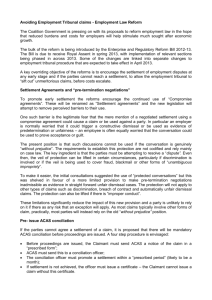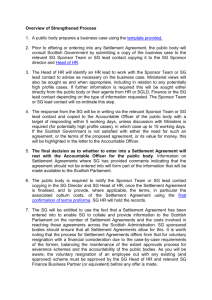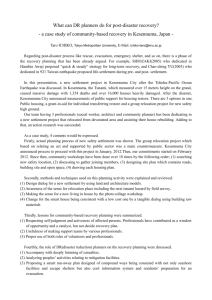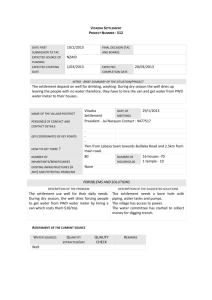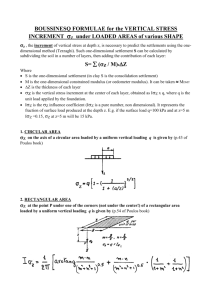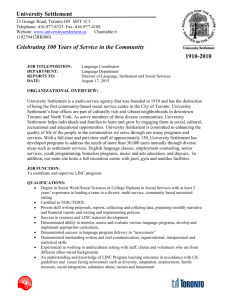lagged dynamic vs Adjusted Static Models
advertisement
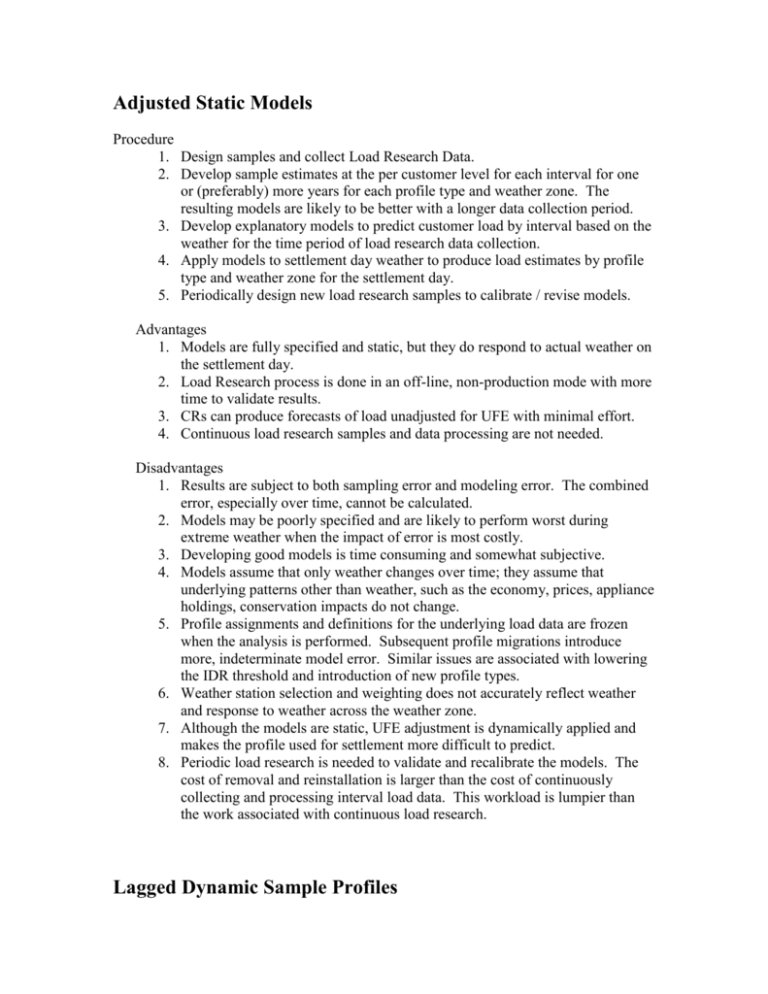
Adjusted Static Models Procedure 1. Design samples and collect Load Research Data. 2. Develop sample estimates at the per customer level for each interval for one or (preferably) more years for each profile type and weather zone. The resulting models are likely to be better with a longer data collection period. 3. Develop explanatory models to predict customer load by interval based on the weather for the time period of load research data collection. 4. Apply models to settlement day weather to produce load estimates by profile type and weather zone for the settlement day. 5. Periodically design new load research samples to calibrate / revise models. Advantages 1. Models are fully specified and static, but they do respond to actual weather on the settlement day. 2. Load Research process is done in an off-line, non-production mode with more time to validate results. 3. CRs can produce forecasts of load unadjusted for UFE with minimal effort. 4. Continuous load research samples and data processing are not needed. Disadvantages 1. Results are subject to both sampling error and modeling error. The combined error, especially over time, cannot be calculated. 2. Models may be poorly specified and are likely to perform worst during extreme weather when the impact of error is most costly. 3. Developing good models is time consuming and somewhat subjective. 4. Models assume that only weather changes over time; they assume that underlying patterns other than weather, such as the economy, prices, appliance holdings, conservation impacts do not change. 5. Profile assignments and definitions for the underlying load data are frozen when the analysis is performed. Subsequent profile migrations introduce more, indeterminate model error. Similar issues are associated with lowering the IDR threshold and introduction of new profile types. 6. Weather station selection and weighting does not accurately reflect weather and response to weather across the weather zone. 7. Although the models are static, UFE adjustment is dynamically applied and makes the profile used for settlement more difficult to predict. 8. Periodic load research is needed to validate and recalibrate the models. The cost of removal and reinstallation is larger than the cost of continuously collecting and processing interval load data. This workload is lumpier than the work associated with continuous load research. Lagged Dynamic Sample Profiles Procedure 1. Design samples and collect Load Research Data. 2. For each settlement day (final and true-up) use the sample interval data to produce load estimates by profile type and weather zone at the per customer level. 3. When sufficient data is available (one to two years of data) develop explanatory models to predict customer kW based on the weather for the time period of load research data collection. 4. For initial settlements, apply static adjusted models to settlement day weather to produce load estimates by profile type and weather zone for the settlement day or use some other load profiling method. Note: true dynamic samples, which would require remote reading capability, would avoid the need for another profiling method. 5. Periodically use new load research sample data to calibrate / revise models for initial settlement. 6. Periodically evaluate the accuracy and representativeness of samples and and re-design new samples. Continuous rolling samples would be advisable allowing a fraction of the sample points would be replaced cyclically. Advantages 1. Lagged Dynamic Profiles are inherently more accurate than Adjusted Static Models. 2. Profiles used for final and true-up settlement are subject only to sampling error, which can be calculated accurately … the dollar value of precision levels can be assessed, and the market can make informed decisions on the appropriate level of accuracy. 3. Samples typically will perform best at peak load times when the impact of profiling error is most costly. 4. Developing daily profiles for final and true-up settlements can be done fairly quickly and non-subjectively. 5. Profiles will reflect all changes over time affecting load including those related to weather, the economy, prices, appliance holdings, conservation impacts. 6. Profile assignment migrations, IDR Threshold modifications and introduction of new profiles are dynamically reflected in the load estimates by applying domains analysis. The migration is incorporated in the sample analysis process to produce up-to-date estimates. 7. Weather variations across the weather zone are automatically accommodated because the sample points are distributed proportionately across the zone. Each sample point reacts to its local weather, and the sample estimates accurately weight the impact of the weather across the zone. 8. UFE adjustments are lower in magnitude than with use of static models. 9. The load research data collection and analysis effort is more uniform over time. Disadvantages 1. Static adjusted models (or some other load profiling method) are needed for initial settlement; they can, however, be updated consistently on an ongoing basis with new load research data. 5. The Load Research analysis process is done in a production mode with limited time to validate results. 6. CRs may need to modify their load forecasting methodology. 7. Continuous load research samples and data processing are needed.


